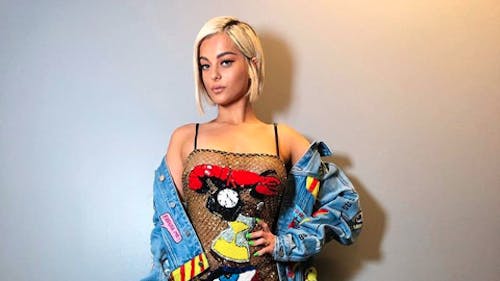Bebe Rexha raises awareness regarding body, beauty

In nearly all aspects of modern-day pop culture, diversity and inclusivity are universal issues in representation that are gradually being tackled. This is especially true of size inclusivity in media and fashion today. Fashion ads and magazines — in an already image-saturated world – with the help of easily accessible tools like Photoshop and Instagram, create unrealistic ideals of what "perfect" bodies should look like.
For women, prescribed beauty standards comprise of characteristics straight out of models in Vogue and on Victoria’s Secret runways: tall, slender and devoid of stretch marks, dimples or cellulite.
Last week, pop artist Bebe Rexha voiced the frustrations she felt in regard to the fashion industry on Instagram after multiple designers refused to dress the singer for the upcoming Grammys, giving her the flawed reasoning that she was "too big" at a dress size of 6 to 8.
Rexha, a unique voice in recent pop music, is nominated this year for Best New Artist and Best Country Duo/Group Performance for her song "Meant to Be" featuring Florida Georgia Line. Advocates of body positivity like fellow singer Demi Lovato, model Tess Holliday, and size-inclusive fashion designer Christian Siriano supported Rexha in her criticisms of high fashion’s rejection of the existence of a more diverse, and therefore more beautiful, range of body types.
Rexha isn't the first celebrity to be vocal about the lack of diversity in fashion and how disheartening it can be for one’s self-esteem. Beautiful and talented women like Ashley Graham, Octavia Spencer, Christina Hendricks and Gabourey Sidibe have been denied the picture-perfect red carpet moments they deserve simply because their builds didn't conform to what fashion houses deem worthy.
The word "fat" has often been thrown around with heavy and hurtful connotations in fashion. Most importantly, the accomplishments and characters of many celebrities have been diminished when they have been viewed by fashion houses from a purely superficial and physical perspective.
Luxury fashion often presents itself as unattainable, which alienates plus-size women and promotes a culture of body shaming, eating disorders and an overall diminishing sense of self-worth. Most high fashion brands have sizes usually end in the range of U.S. sizes 10 to 14 and their runways are representative of the industry’s need for forward thinking approaches to representation.
An exception to this norm would be Siriano, the "Project Runway" winner who is now a trailblazer in size inclusivity. In an open letter featured in Teen Vogue in 2017, Siriano poetically expressed the ideology behind his work ethic, saying, “As a creator of fashion, I celebrate the body that wears my work. What an honor to be chosen, to be appreciated and to be seen. That honor extends in both directions.”
Bianca Evangelista, a School of Engineering first-year who enjoys fashion, believes that pop culture’s backward, unrealistic approach to sizing inclusivity is too firmly established.
“The toxicity in the fashion industry is constantly perpetuated by excuses. Body positivity movements aim to empower all bodies, big and small. Many brands and the media make the strange excuse that sizes on opposite extremes of the spectrum — plus and petite — would equate to promoting an unhealthy state of being," she said.
Evangelista also articulated there being no excuse for exclusion within the industry.
"It may be difficult or uncomfortable for brands to market themselves differently, but the bottom line is brands have to be inclusive. Luxury clothing is clearly missing a sense of reality and designers should be able to cater to any and all body types,” she said.
The solution to the inherent close-mindedness in fashion lies in something simple yet revolutionary: accepting, respecting and, above all, loving bodies of all shapes and sizes. As Shaantala Shenoy, an Ernesto Mario School of Pharmacy first-year, said, “Fashion should embrace and celebrate everybody and every body.”



